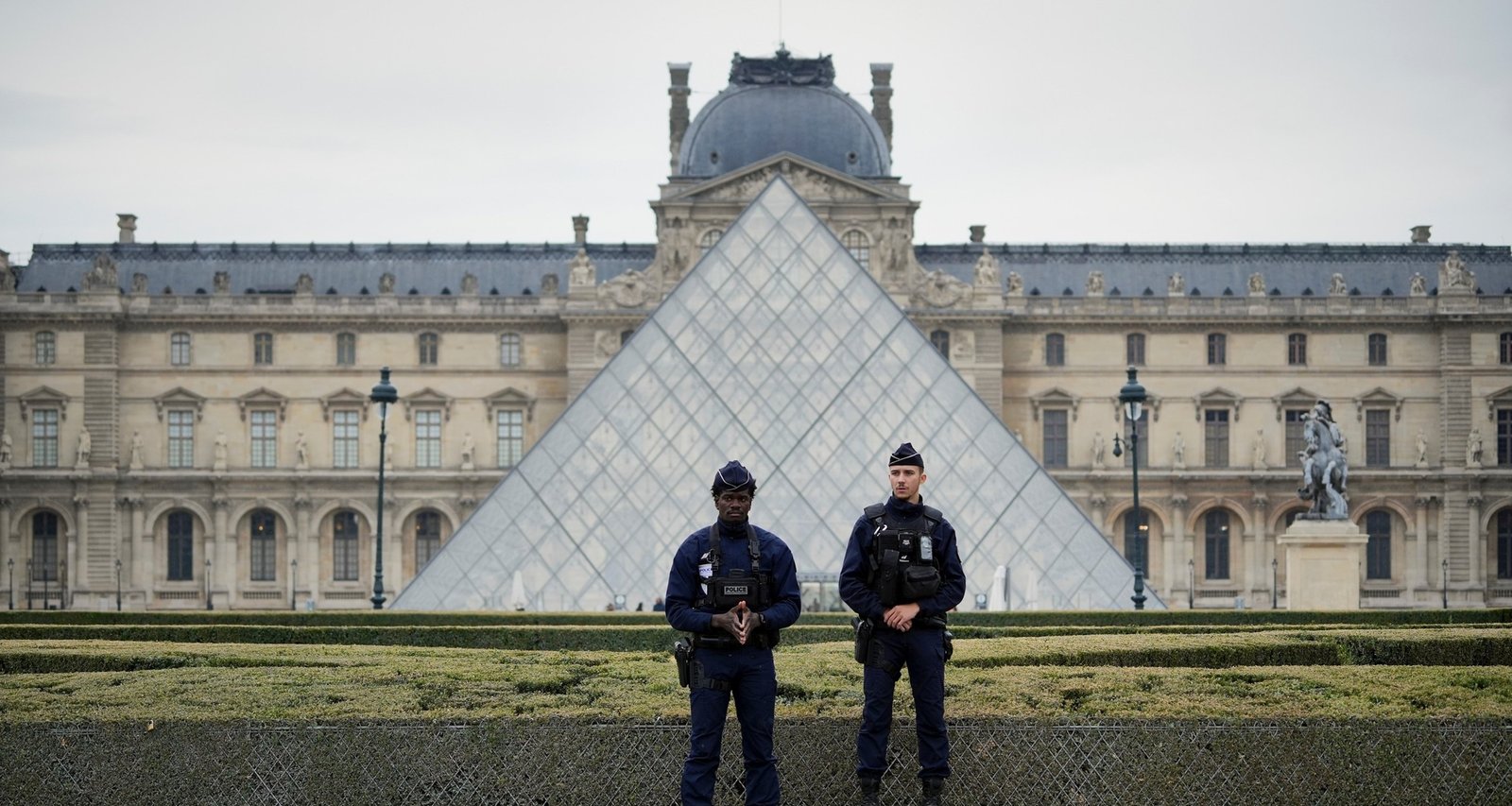Surveillance footage studied by detectives shows a team arriving at the Louvre’s western façade in a vehicle configured as what police described as a “mobile freight elevator.” The truck carried a retractable metal ladder that was extended to a second-floor window overlooking the Apollo Gallery. Investigators say the thieves used an angle grinder to break the window, entered the gallery, and then smashed open two reinforced glass cases inside. The operation reportedly lasted only a few minutes.
Among the pieces removed were crowns, necklaces, earrings and brooches, some of which once belonged to Emperor Napoleon I and Empress Joséphine. Prosecutor Laure Beccuau placed the preliminary market value of the haul at approximately €97 million, or about $102 million. Cultural historians note that the objects’ historical significance could make them difficult to resell through illicit channels—an obstacle that often drives criminals to dismantle or melt down such artifacts.
Immediately after leaving the museum, four suspects mounted two high-performance motorcycles and negotiated narrow streets through central Paris, according to witness accounts compiled by police. Traffic-camera data last placed the bikes heading southeast on the A6 motorway toward Lyon. Authorities have issued all-points bulletins to border and customs services, and Interpol has been notified because of the likelihood that the goods or fugitives could cross international lines.
President Emmanuel Macron condemned the break-in, calling it an affront to the nation’s cultural patrimony, and pledged full governmental support for the ongoing investigation. Culture Minister Rachida Dati, coordinating efforts with the Justice Ministry, characterized the crime as a “simple yet spectacular” assault on French heritage. Parliamentary committees have also summoned the museum’s leadership to explain existing security protocols and any immediate measures being put in place to avert similar incidents.
The Louvre, the world’s most visited museum, maintains an extensive security infrastructure that includes motion detectors, reinforced glass, and dedicated police patrols. Nonetheless, large institutions remain vulnerable to carefully planned strikes, particularly during overnight maintenance periods. Interpol’s Works of Art database notes a recent increase in high-profile art and antiquities thefts across Europe, with organized groups targeting items that are portable, valuable and historically significant.

Imagem: Internet
As the inquiry widens, forensic teams are evaluating material recovered from the crime scene, including fragments of glass, tool marks, and possible DNA traces. Airport surveillance recordings and passenger manifests are being examined to determine whether additional conspirators attempted to leave the country. Authorities have not yet confirmed whether any part of the stolen collection has been located, nor whether the jewels were insured.
French police continue to appeal for public assistance, urging anyone with information on the remaining suspects or the whereabouts of the artifacts to come forward. International art dealers and auction houses have been alerted to the missing pieces, each of which is cataloged in the Louvre’s public inventory. Officials caution that even clandestine sales may leave digital or logistical footprints, increasing the likelihood of eventual recovery.
While the arrests have offered investigators new leads, law-enforcement agencies emphasize that the operation remains active. Search warrants are being executed in multiple locations around Paris and in other regions of France. Prosecutors are expected to seek pre-trial detention for the two suspects, while additional charges, including aggravated theft and destruction of cultural property, will depend on the evidence gathered in the coming days.
With much of the plunder still missing and further suspects at large, French authorities are maintaining elevated security at the Louvre and other national institutions. The outcome of the case is likely to influence future security funding and protocols at museums throughout the country.
Crédito da imagem: Remon Haazen/Getty Images



